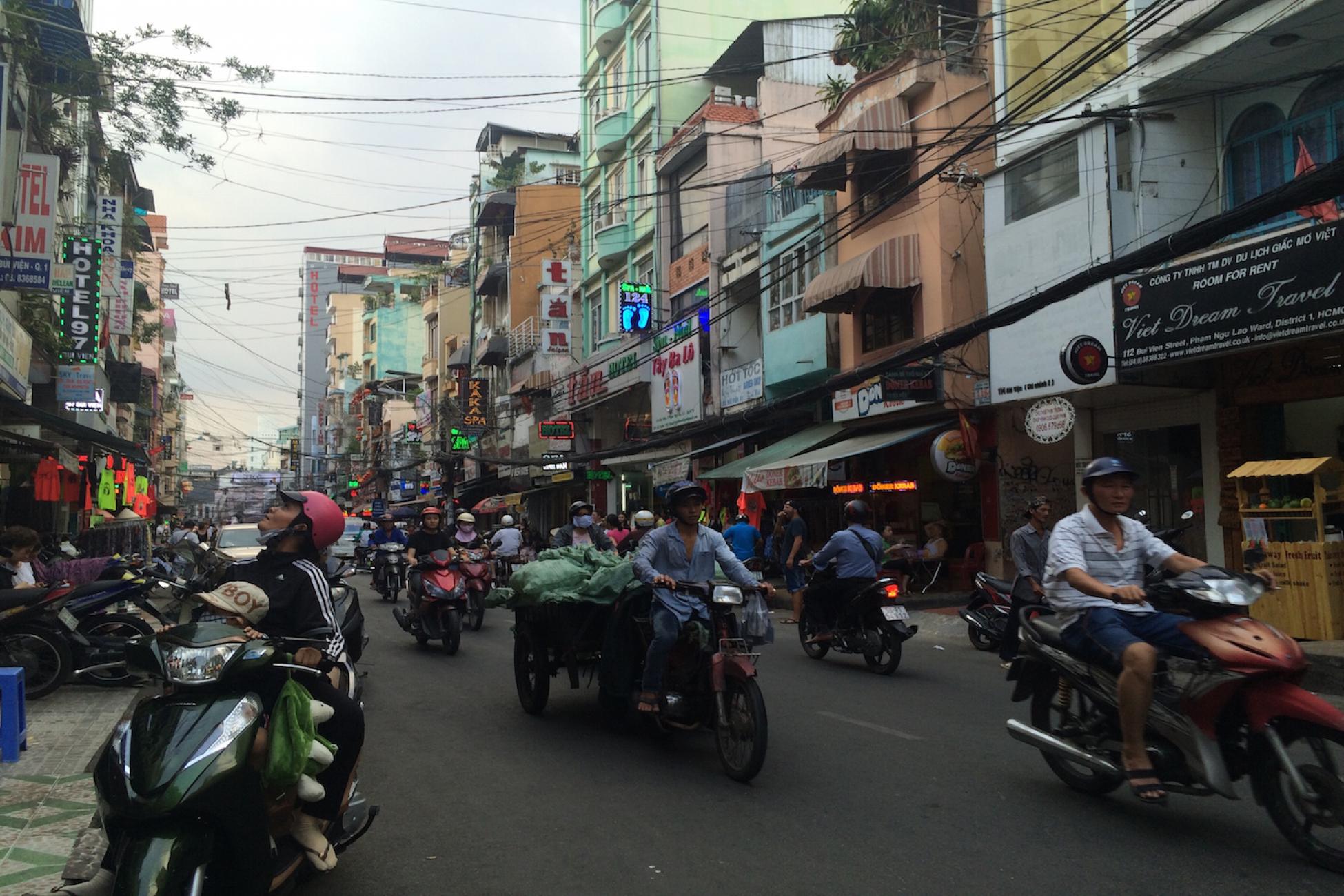The easiest part of moving to Ho Chi Minh City, Vietnam, was what I expected to be the most difficult—braving its seemingly chaotic streets. The majority of the population owns a motorbike; tourists often say that there is no order or rules, and that crossing the street is more terrifying than driving.
I arrived in Saigon on January 5 and rented a motorbike the next day. One of the three people I live with, Vi, is Vietnamese, and on my second night in Ho Chi Minh (otherwise known as Saigon), she sat behind me while I weaved through the terrifying traffic.
When I lived in Canada, I had owned a Honda Civic. I had never driven a motorcycle in my life, and in fact, had only been on the back of one once—and that was in Winnipeg, where the roads were straight and flat as flat could be. Needless to say, despite my driving experience, I was completely blown away by the mess that was driving in Saigon.
“This,” said Ben, “is the busiest, most hectic and insane part about driving in Vietnam, so you may as well get it over with. Try to look everywhere at once, and try not to stop. Ready?”
Vi taught me the rules of the road, which were that although there are rules of the road, no one actually follows them. She taught me to look right, left, behind and in front of me constantly to avoid an accident. The next day, Vi’s Australian husband, Ben, told me he was going to take me to district one (Q.1, downtown Saigon) to practice riding a motorbike.
In Q.2, where we live, the streets are all dirt and gravel, due to multiple construction projects in the area. I had rented a cheap motorbike of poor quality, so my tires were slipping out from under me, and the Vietnamese were swerving around me at insane speeds, honking at me from every direction. We travelled through an underground tunnel, where the hot air sat on my shoulders like a heavy blanket, and we popped out on the other side with me gasping for fresh air.
“This,” said Ben, once we reached Q.1, “is the busiest, most hectic and insane part about driving in Vietnam, so you may as well get it over with. Try to look everywhere at once, and try not to stop.”
We had reached Ben Thanh market, where there was a roundabout of enormous size. There are no shortage of videos on YouTube displaying the insanity.
“Ready?” Ben asked, and without waiting for a reply, he kicked off the ground and began to drive. I lunged into the traffic behind him, weaving through taxis, cars, buses, motorbikes and pedestrians, all while screaming internally. Ben took the third exit from the roundabout, and came to a stop on the sidewalk, grinning madly. “How was that?”
I found the roundabout infinitely easier to navigate than the backpacker area, where the roads were smaller and the volume of traffic much greater. People drove on sidewalks, on the wrong side of the road, pedestrians crossed the street at their leisure, people meandered in the middle of the road, taxis and expensive cars took up over half of the roads, and motorbikes streamed through narrow alleyways full of food carts and “Wookie Women” (prostitutes, even in the middle of the day). None of this was as shocking to me as the number of white people that littered the streets.
Ben parked his motorbike in front of a mobile shop, because he was convinced that my locked iPhone, signed to a contract with a Canadian mobile company, could be unlocked and then a Vietnamese SIM card could replace my Canadian SIM. This was not the case. Ben had told me earlier in the day that if you were white in Vietnam, you could get nearly anything you wanted, so try to imagine his surprise when the young Vietnamese employee handed my iPhone back to him, saying, “We cannot do this, so sorry.”
We walked back out onto the sidewalk, where Ben, looking defeated, put his helmet on, and said he had to go to work now, and if I needed anything I could contact him through WhatsApp. He explained to me the way to get back, but as soon as he drove away, my mind went blank.
I put my helmet on, started my motorbike and threw myself back into the organized chaos of Saigon.

